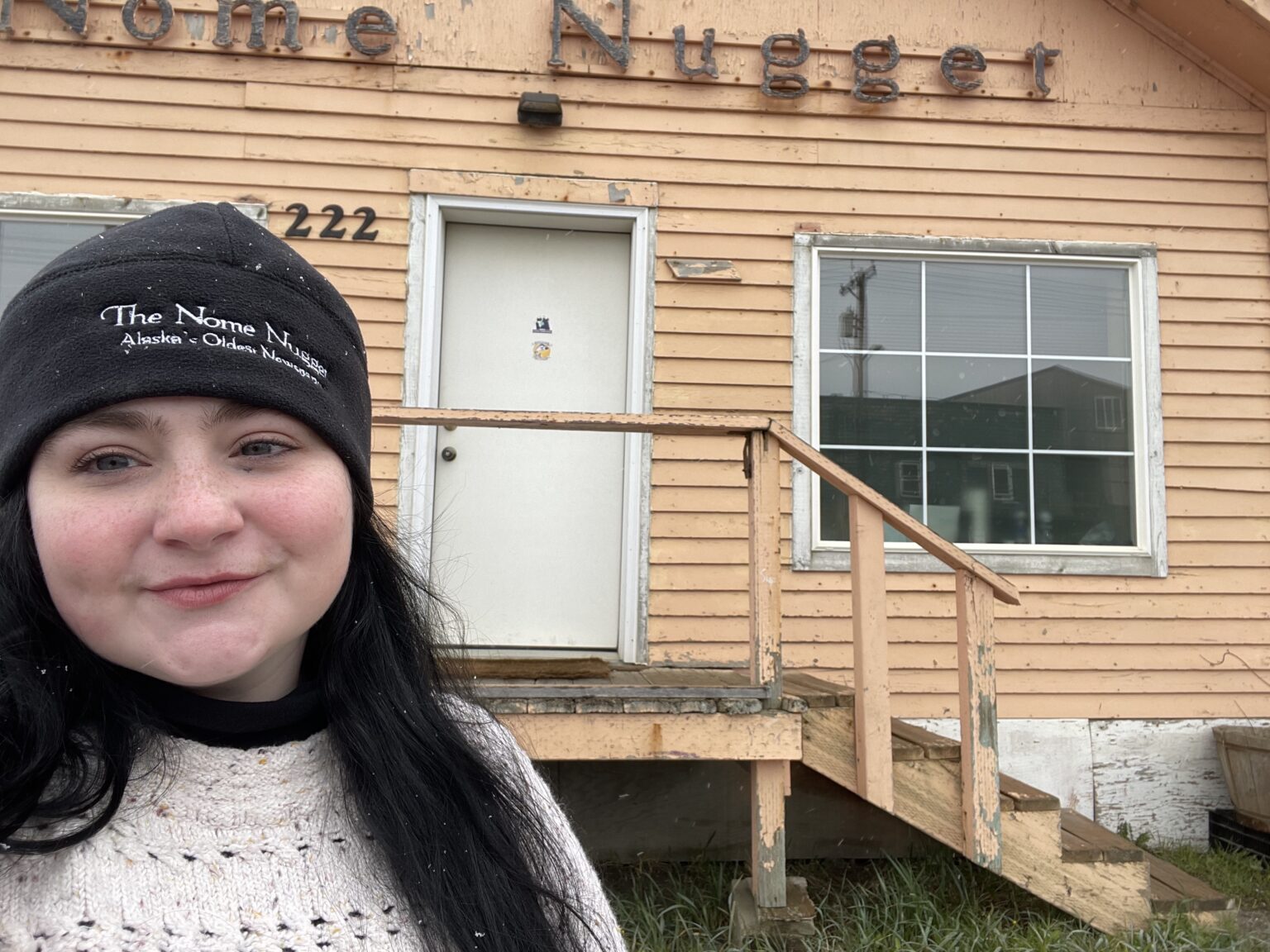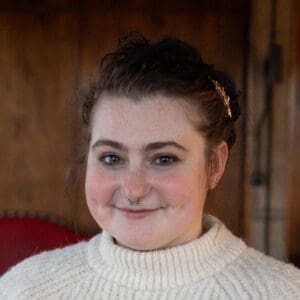One of the first things I noticed when I moved to Nome, Alaska, was the “missing persons” signs. They were everywhere: strung up on light poles across town; hung up on the bulletin board at the coffee shop; taped in the windows of City Hall; sitting in stands at the grocery store and the gas station. The names and their stories became familiar after a while.
This time last year, I was sitting in the iconic salmon-colored newsroom of the Nome Nugget, my old paper and the oldest continuously published newspaper in Alaska. Weeks of snow were piling up on the ground outside, and the sea ice was thick enough to stand on past the beach. It had been just over a year since Florence Okpealuk (known around Nome as “Flo”) disappeared from the same beach.

The Nugget staff wrote about her case, her whereabouts, the marches and searches organized for her, her family when we had the time, but everyone around town already knew she was gone.
“Alaska Daily,” the new hit drama series on ABC, hopes to bring these stories to light. The show tells the stories of real Alaska Native men and women who have gone missing, presumed dead, around the state. Though the names of Alaskans throughout the show have been changed, the details, gruesome as they may be, reflect the reality of living in the Great North, nicknamed by The Atlantic “the land of missing persons.”
American Indian and Alaska Native men and women experience significantly higher rates of violence in the United States than non-native communities, according to the National Institute of Justice, part of the U.S. Department of Justice. More than four in five Native men and women have experienced violence in their lifetime. They also see much higher rates of assault and murder than non-Native individuals, according to a report funded by the DOJ.

The show, created by newsroom-movie-connoisseur Tom McCarthy (who directed “Spotlight” in 2015), was inspired by a recent joint investigative journalism venture between the Anchorage Daily News and ProPublica, exploring the overlooked stories of missing and murdered Indigenous women.
The first episode of the show introduces viewers to an abrasive main character, Eileen Fitzgerald, played by Academy Award-winning actress Hilary Swank, who grew up in Bellingham before moving on to Hollywood fame as a teenager. Swank’s character is several terrible journalism tropes stacked on top of each other wearing a boujee trench coat. She compares moving from her major New York City newsroom to Alaska to “the minor leagues,” which couldn’t be further from the truth.
I may be biased, as a Washington, D.C.-based journalist who moved to northern Alaska on a whim, but there are stories worth covering around every corner in Alaska, a state more than twice the size of Texas. Nome, a town of about 2,000 people on a good day, is on the front lines of climate change and international warfare, being only a few miles from the Russian coast.
As it is, the scenes without Swank’s character, where we see local reporters caring about their community, attending the State Fair, writing about local cafes and corrupt politicians, and finding family members in the far reaches of the state, are the best of the show.

Watching “Alaska Daily” as a former bush journalist (reporting in a region where there are no roads), is like watching a home movie; nostalgic in all the best ways. The attention to detail, the b-roll of Anchorage icons like Chilkoot Charlie’s and Hotel Captain Cook, the references to basketball tournaments and no trees up north, even the language used in the show, reflect actual Alaskan communities.
There were a couple moments throughout the first four episodes where I couldn’t help but wince, though. There are times throughout the show when missing and murdered Indigenous people are treated as a recent phenomena, rather than a systemic, decades-long issue, particularly by the white characters. I can look past Swank’s character railing against cancel culture and unwillingness to learn about her new community, but I want to see more of her fictional reporting partner, Roz Friendly, played by Grace Dove from the Secwepemc (Shuswap) Tribe.

Friendly, who forces the stubborn Fitzgerald to learn about the region, teaches her common Inupiaq and Yup’ik words that I learned when I first moved there, too. The first one I learned: quyana, which means “thank you.”
I can’t think of a time in my life when I ever “waited” to watch a show week by week, but “Alaska Daily,” which ABC started airing Oct. 6, and will air until Dec. 8, is worth the cheesy journalism diatribes and memorable Alaskan moments.





